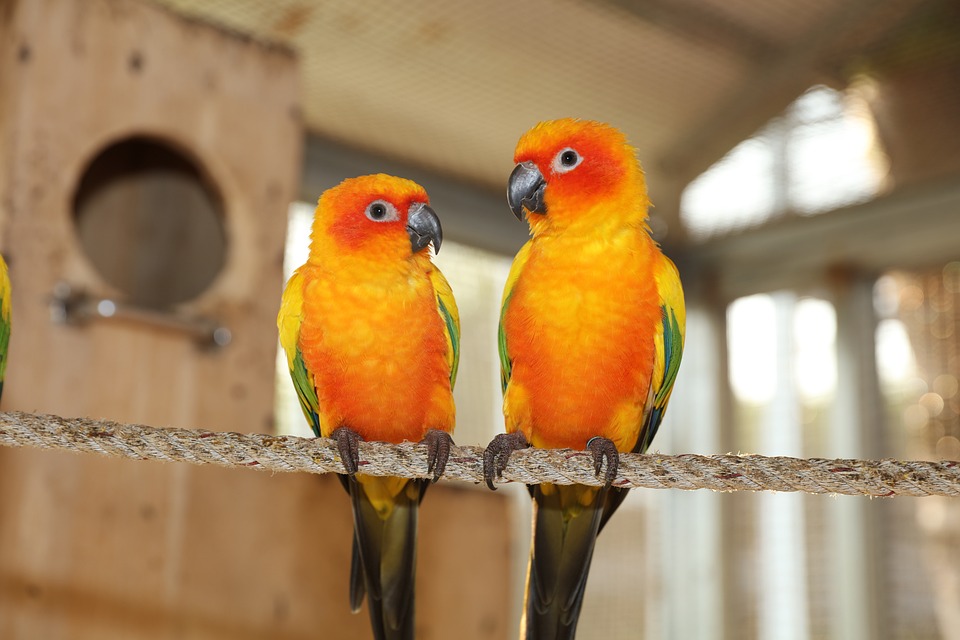Parrots are fascinating creatures known for their intelligence, curiosity, and complex behaviors. As a parrot owner, understanding their behavior is crucial for their well-being and to establish a harmonious bond. One way to unravel the mysteries of parrot behavior is through the use of foraging boxes. In this article, we will explore the captivating world of foraging boxes and how they can positively impact your parrot’s behavior.
Foraging boxes are essential for parrots for several reasons. First and foremost, they fulfill their instinctual need for foraging. In the wild, parrots spend a significant amount of time searching for food, and by providing them with foraging boxes, we mimic this natural behavior. This not only satisfies their instinctual drive but also provides them with mental stimulation and enrichment.
Mental stimulation is crucial for parrots as it helps keep their minds active and engaged. Foraging boxes offer a variety of challenges that require problem-solving skills. Parrots must figure out how to navigate through the box, open compartments, and extract the hidden treats. This mental exercise helps keep their brains sharp and prevents boredom.
Boredom can lead to behavioral issues in parrots, such as excessive screaming, feather plucking, and aggression. By providing foraging boxes, we can prevent these issues by keeping our parrots mentally stimulated and engaged.
So, what exactly are foraging boxes? Foraging boxes come in various shapes and sizes, but they all serve the same purpose – to provide mental stimulation and enrichment for parrots. There are two main types of foraging boxes: DIY foraging boxes and commercial foraging toys.
DIY foraging boxes can be made at home using non-toxic materials such as untreated wood, safe food-grade plastics, and natural fibers like sisal rope. These boxes can be customized to suit your parrot’s preferences and abilities. Commercial foraging toys, on the other hand, are ready-made and can be purchased from pet stores. They often come in different levels of difficulty to cater to different parrot species and their foraging skills.
Foraging boxes offer numerous benefits to parrots. They enhance problem-solving skills as parrots learn to navigate through the boxes and discover hidden treats. This mental exercise keeps their brains sharp and prevents boredom.
Foraging boxes also promote natural behaviors in parrots. Foraging behavior is essential for their well-being, and by providing them with foraging boxes, we encourage this natural instinct. Play behavior is also stimulated as parrots engage with the boxes, manipulating and exploring their contents. Additionally, foraging boxes can promote social behavior as parrots may interact with the boxes together or compete for treats.
Introducing foraging boxes to your parrot can be done in a few simple steps. Start with simple foraging challenges that are easy for your parrot to solve. Gradually increase the difficulty level as they become more proficient. It’s also important to rotate the foraging boxes and their contents to provide variety and keep the activity fresh and engaging.
Now let’s address some frequently asked questions about foraging boxes and parrot behavior.
Q: What types of materials are safe for making DIY foraging boxes?
A: When making DIY foraging boxes, it is important to use non-toxic materials such as untreated wood, safe food-grade plastics, and natural fibers like sisal rope. Avoid using materials that can easily splinter, break, or pose a choking hazard to your parrot.
Q: Can foraging boxes be used for all parrot species?
A: Yes, foraging boxes can be used for most parrot species. However, it is essential to consider the size and strength of the box and its contents. Smaller parrot species may require smaller or more easily manipulable foraging boxes, while larger parrots may need sturdier options.
Q: How often should I change the contents of the foraging boxes?
A: Changing the contents of the foraging boxes regularly is recommended to maintain your parrot’s interest and prevent them from getting bored. Aim to change the contents every few days or whenever your parrot seems less engaged.
Q: Are there any potential risks associated with foraging boxes?
A: While foraging boxes are generally safe, it is crucial to monitor your parrot during playtime to ensure they do not ingest any non-edible materials or get entangled in small parts. Always choose foraging boxes with appropriate sizes and supervise your parrot’s interactions to prevent accidents.
In conclusion, foraging boxes offer an exciting and enriching experience for parrots, catering to their natural instincts and stimulating their problem-solving skills. By incorporating foraging boxes into your parrot’s daily routine, you can provide mental stimulation, prevent behavioral issues, and strengthen the bond between you and your feathered friend. Remember to choose safe materials, introduce gradually, and rotate the contents to keep the activity fresh and engaging. Happy foraging!









